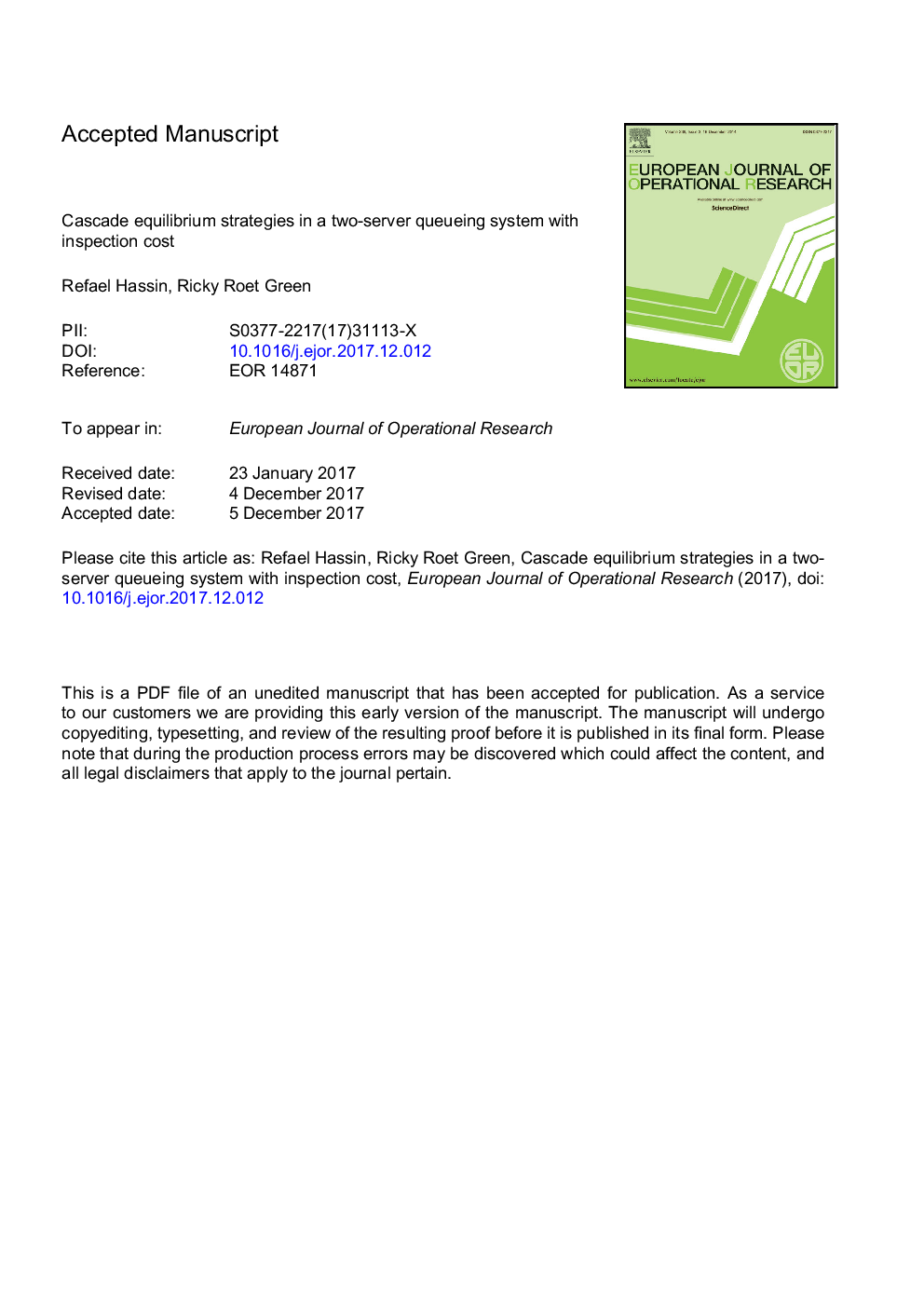| Article ID | Journal | Published Year | Pages | File Type |
|---|---|---|---|---|
| 6894967 | European Journal of Operational Research | 2018 | 33 Pages |
Abstract
Time-sensitive customers arriving to a system of parallel servers will search for the least congested queue. However, customers do not always have full information of the system state, because the search is associated with a cost. We present a model of parallel queues in front of two servers that provide the same service. Upon arrival, each customer inspects the queue in front of one server before either joining it or inspecting the other. If both queues were inspected, the customer joins the inspected queue that minimizes sojourn time. The solution of this model is not straightforward, even when the system contains only two servers, and the equilibrium is not always a threshold strategy. We show that, in many cases, a unique equilibrium strategy that contains cascades exists: customers choose one action (join or inspect) when they observe i and i+2 customers in the first observed queue, and the other action when they observe i+1 customers in the first observed queue. We find cascade equilibrium strategies even when the servers are identical with respect to service rate or inspection cost. We also show that compared to the case where all customers first inspect the same queue, symmetric inspection reduces system load but not necessarily customers' expected cost.
Related Topics
Physical Sciences and Engineering
Computer Science
Computer Science (General)
Authors
Refael Hassin, Ricky Roet-Green,
